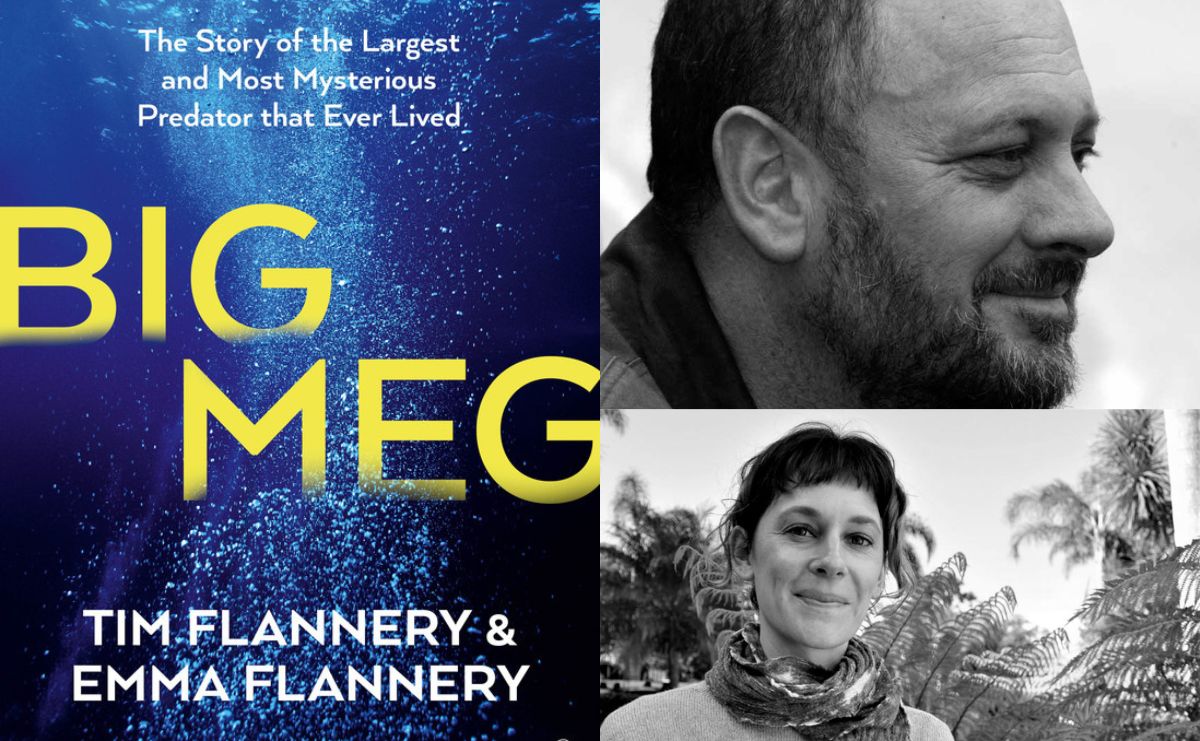‘Imagine,’ write Tim and Emma Flannery, ‘an enormous predatory shark weighing 60,000 kilograms – twice as much as a humpback whale.’ This is the megalodon, the Big Meg, the largest predator ever to exist – a species that probably survived for more than 20 million years. Little wonder that the Flannerys teamed up to explore their fascination with it. You too will be humbled by the immense geological time scales in which sharks have prospered.
Big Meg is written in what comes across as Tim Flannery’s voice and is peppered with a number of personal anecdotes, including one about his home being destroyed by fire. That led him and his children to stay with friends who permitted his then six-year-old daughter Emma to watch a movie together with their older children. That movie turned out to be the Spielberg classic, Jaws and it left Emma terrified of sharks.
Perhaps that experience was a factor in the creation of this book – though humans have always been exhilarated by monsters, and sharks rate high on the monster list, as the enduring popularity of Jaws and the Sharknado films and spin-offs, attest.
But what appears to be one of the main triggers for the fascination with the megalodon is its teeth. The book boasts some photographs of these to supplement its many descriptions of them. The beauty and size of these teeth seem to have enthralled people throughout the ages and there are still many scavengers and collectors of them. It is from these dentures that much of the history of the megalodon is deduced. Indeed, these big teeth resulted in its name: megalodon means “big tooth”.
There is a brief excursion into ‘cryptozoology, the study of animals that are imagined to exist but whose existence is yet to be proven. Some previously cryptic animals have indeed turned out to be alive in the modern day, including the mythical kraken (the colossal squid) and the majestic gorilla. But others, such as the yeti and the Loch Ness monster, remain in the fantastical sphere’. There’s even a foray into how megalodon teeth were used as tools by the Gunditjmara people of western Victoria.
There is, as you would expect, commentary on how ‘humans are seen as pitted against nature, rather than being part of it’, an era that the authors hope is ‘swiftly passing’. The chapter ‘Man Eats Shark’ makes the point that sharks cause about 10 human deaths a year, whereas humans kill about 100 million sharks in the same period.
While this is all very interesting, is an entire book on an extinct creature, however large, of genuine interest to the casual reader? I admit I approached it with some misgiving: a short article on the subject might grab my attention, but a whole book would surely not, even one written by a justifiably famous and highly respected person and his well-qualified daughter. But I was wrong to worry and if you decide to read it you will find, as did I, that the book is very rewarding.
On top of everything else it offers, it presents some gripping insights into the brilliant detective work carried out by a whole range of scientific experts. It documents what can be, and what has been, deduced from the fossilised remains of these great sharks. It is exemplary in the way it draws clear lines between speculation, fact and fiction in a way that any lover of good detective stories would appreciate.
Read: Book review: Prudish Nation, Paul Dalgarno
Above all, the authors’ passion for their subject matter is contagious. If you have little interest in fossils and sharks when you start this book, you are in danger of becoming an enthusiastic bore on the subject when you have finished it.
Read it at your peril.
Big Meg: The Story of the Largest and Most Mysterious Predator that Ever Lived by Tim Flannery and Emma Flannery
Publisher: Text Publishing
ISBN: 9781922458841
Format: Paperback
Pages: 256pp
Release Date: 1 August 2023
RRP: $35





